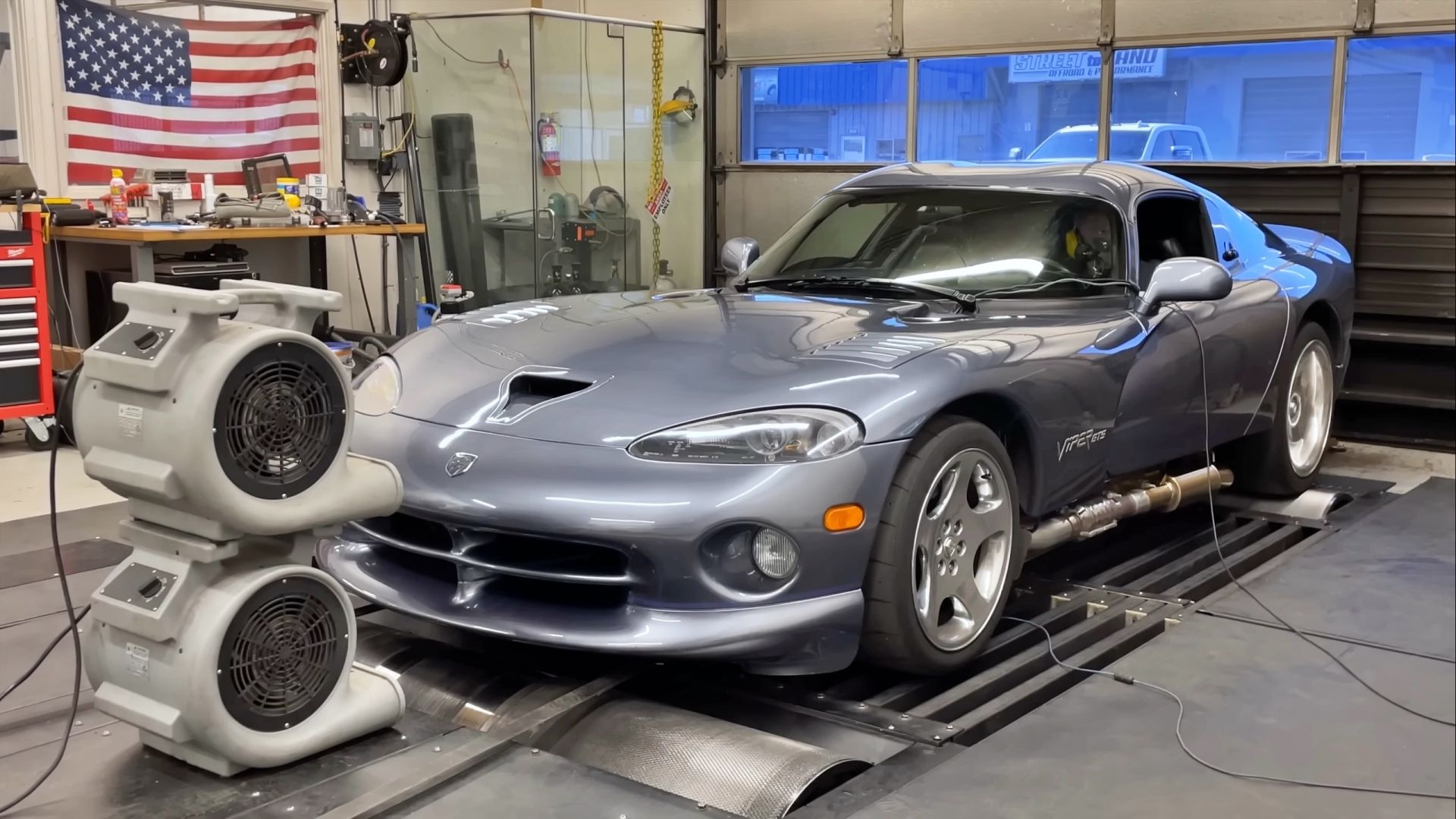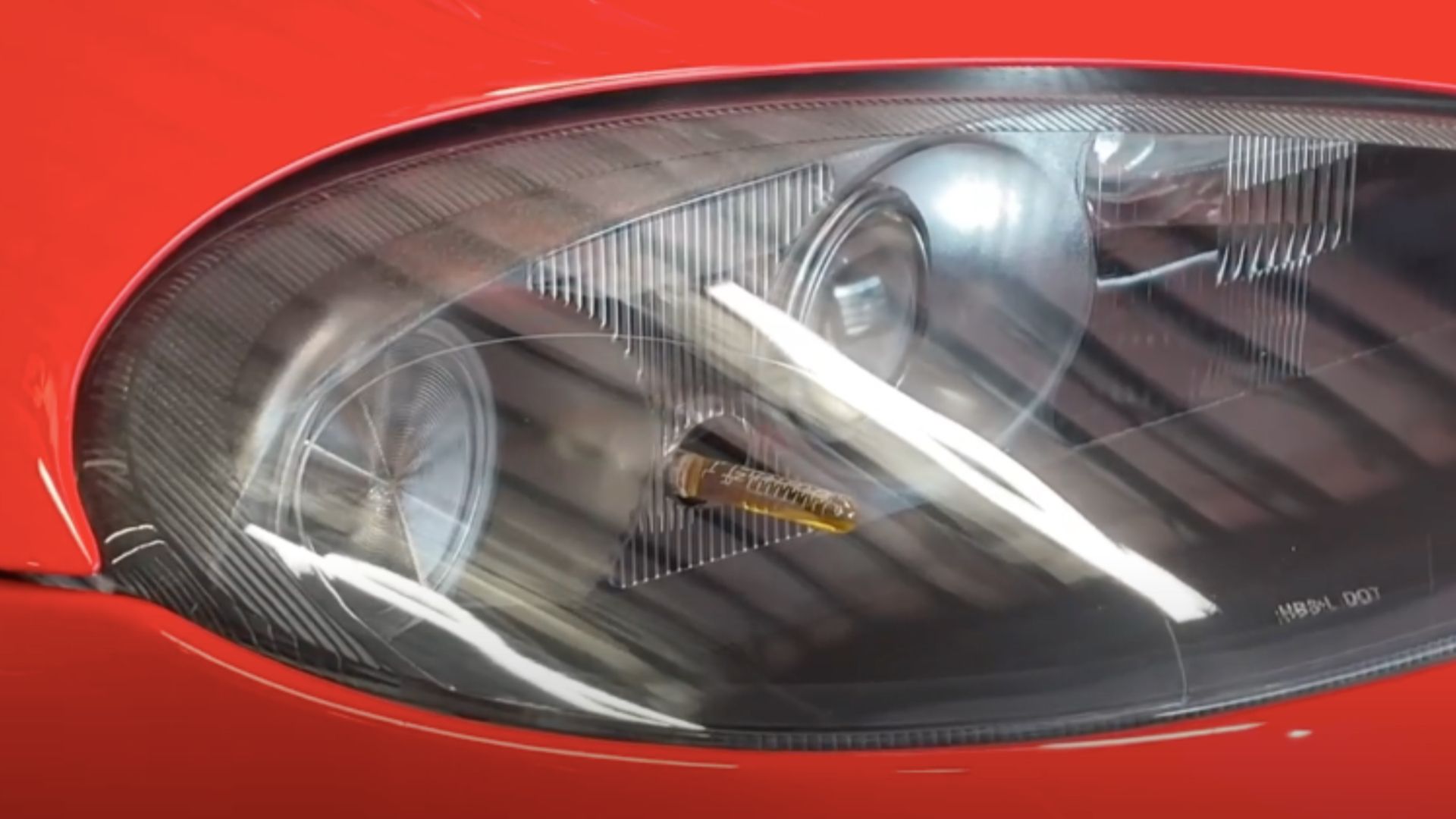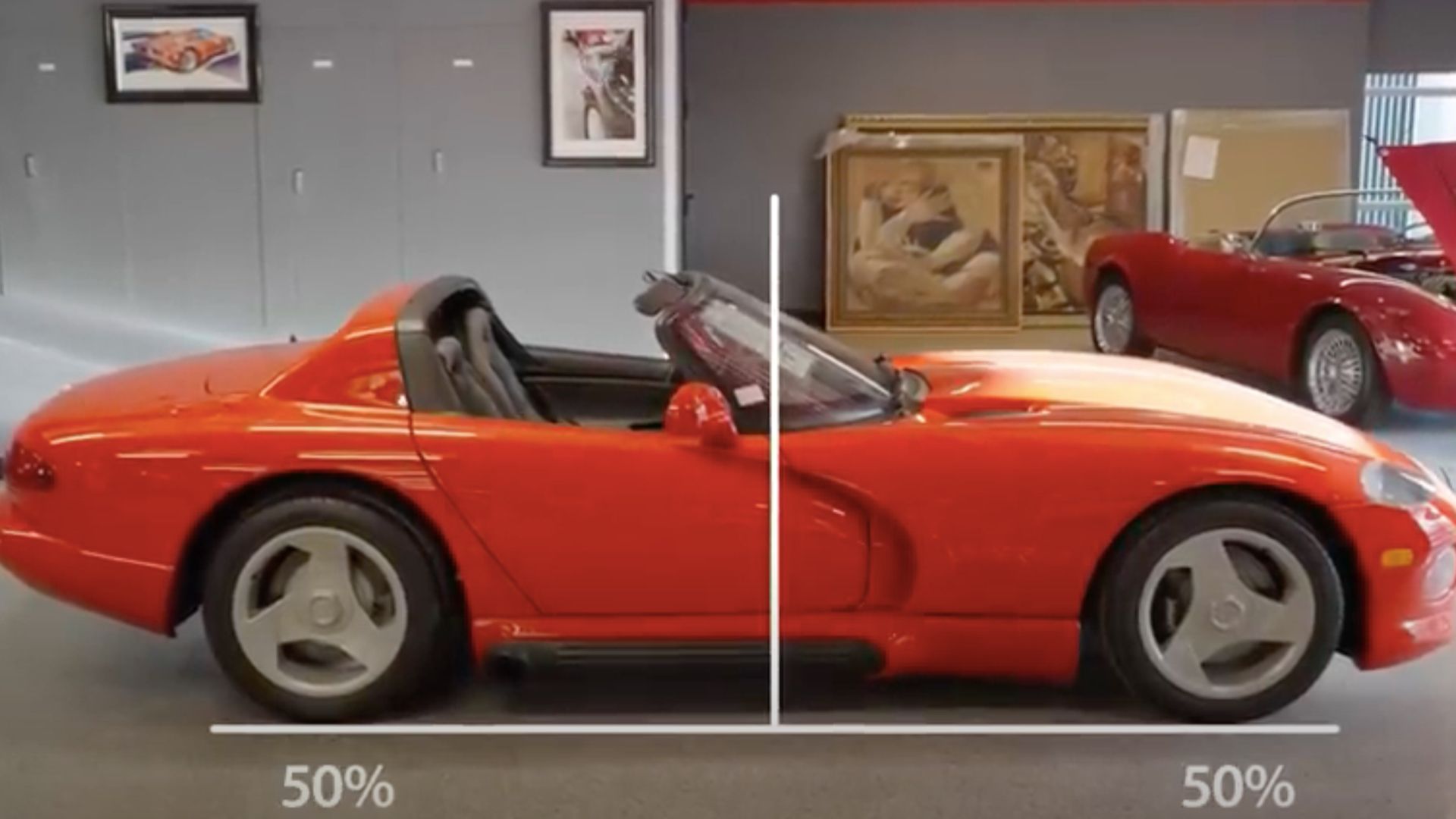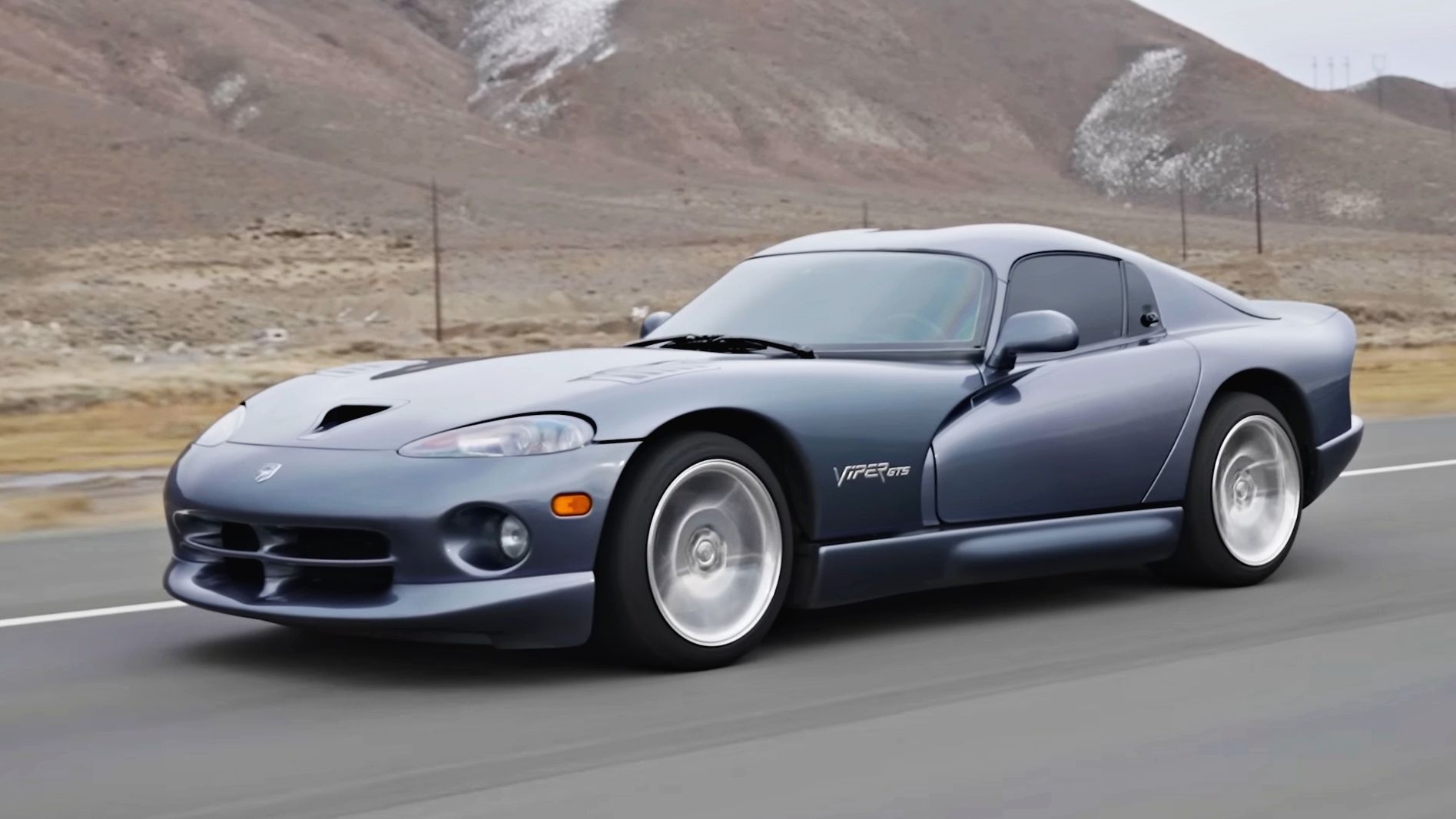Brought to market in 1992, the Dodge Viper is one of the coolest American supercars ever made and the most iconic model in Dodge's history. It also has an interesting origin story in that it was basically created as a morale booster for engineers who were a bit depressed at having to design the soulless, boxy K-Cars of the 1980s.
Originally conceived as a pure performance vehicle, the first models curiously didn't have exterior door handles, key cylinders, or A/C and the top was made of canvas with vinyl windows that opened with zippers. While these are facts that most people may already know, it turns out there are lots of interesting secrets surrounding this amazing car, and one Viper owner is sharing some of those.
Solving The Mysteries Of The Viper
YouTube creator, Four Eyes, got his hands on a 2000 Dodge Viper GTS, which quickly turned into an obsession. He tinkered with the car and read everything he could about it, but there were some things about it that simply defied explanation. Going full-Sherlock Holmes, he decided to get to the bottom of these bizarre mysteries by talking with the Viper's chief engineer, Roy Sjoberg.
The first thing Four Eyes was puzzled about is why there is a protruding bulb, filled with yellow liquid, in the Viper's headlights. Sjoberg, who oversaw every level of the Viper's development, including sourcing headlights, had an interesting explanation. It seems BMW had talked GE into developing the headlights for its Z1 for free. BMW then decided that they didn't want the lights, so GE was stuck with them. Sjoberg came in and convinced GE to give the headlights to Dodge, and then the Viper's bumper and hood were redesigned to accommodate them.
The bulb with yellow fluid is actually a bubble level that was designed to align the lights during installation, which Sjoberg thought was silly and wanted to be removed. When manufacturing informed him that it would cost $1.50 per headlight to take the bulb out, Sjoberg responded, "Screw that, leave the bubble on."
The Mystery Of The Vanishing Viper Cup Holder
Another thing puzzling Four Eyes was the complete lack of a cup holder in the early Vipers. Once again Sjoberg was able to solve the mystery and it all went back to then-Chrysler CEO Lee Iacocca. Road & Track had awarded Chrysler with a "World Renowned Cup Holder" award, ignoring all other design and performance achievements of the automaker. Iacocca was deeply offended by this sarcastic award, and as kind of a middle finger to Road & Track, he forbid engineers from putting cup holders in the Viper, so it could only be judged on its engineering merits.
Mystery #3 is how Dodge tricked the EPA into signing off on its gas-guzzling 460 horsepower V-10 vehicle that clearly didn't meet the federal MPG standards. The first trick is a solenoid in the transmission that takes shifting from second gear directly to fourth gear, which keeps the engine speed down, thus improving gas mileage.
The next thing they did was give the Viper ridiculously long gears, which again improves gas mileage. The ploys worked, and the Viper got the EPA's approval, but the car was slapped with a $2,600 gas-guzzler tax. Though that was a lot of money back then, the MSRP for a Viper in 1992 was $52,000, which is less than a lot of wienie-mobiles go for today.
Time To Bust Some Viper Myths
Four Eyes wasn't just solving mysteries about the Viper, he also busted a couple of myths. The first being that Vipers don't handle very well, which is something his Euro-car friends keep teasing him about. In actuality, the original RT 10 Viper had a perfect 50/50 weight distribution, which as Four Eyes points out, is an engineering feat considering the engine tips the scales at over 600 pounds. That engine sits behind the front axles, which is something Carol Shelby insisted upon, according to Sjoberg, to have a perfectly balanced chassis.
Emerson Fittipaldi, called the Viper the closest thing to a Formula One car that can be driven on the street, but that's not all. MotorTrend put a 1996 Viper GTS up against a variety of high-performance cars, put a 1996 Viper GTS up against a variety of high-performance cars, like a Porsche 911 Turbo, Ferrari F355 Berlinetta, and an Acura NSX in a series of races. The Viper wiped the track with all the other cars, getting the best acceleration, best top speed, fastest lap, and most importantly, best time in the slalom. In other words, the Viper out-handled the best high-performance vehicles of the time.
The last myth to be busted, and the final mystery to be unraveled is that Vipers are dangerous cars. This one is as simple as pointing out that the first-gen Vipers weren't idiot-proof. A car that makes 450 horsepower and 490 ound-feet. of torque, without anti-lock breaks or traction control is more car than most people can handle. As Four Eyes points out, someone who is used to driving a four-cylinder or their mom's SUV is ill-equipped to handle the awesome power of a Dodge Viper.
It's No Secret That The Viper Is Amazing
Dodge produced the Viper from 1992-2012, with a couple of hiatuses in 2007 and between 2010-2012. It was the project that put Dodge back on track to making powerful vehicles and has become the most iconic model the company has ever produced. According to The Viper Registry, only an estimated 31,500 Vipers were made in 25 years of production, making them both rare and desirable. It's not just the collectible nature of the car that makes them so sought after however, because owners have genuine love affairs with Vipers.
Four Eyes opened his video by commenting on how special the Viper is, which is a clue to his actual intent. While the secrets he revealed were both informative and entertaining, the real purpose was him essentially writing a love letter to his 2000 Dodge Viper GTS. Like all Viper owners, and those who dream to be, he is so enthralled with his car that he's compelled to share it with the world. For that, we thank him.





